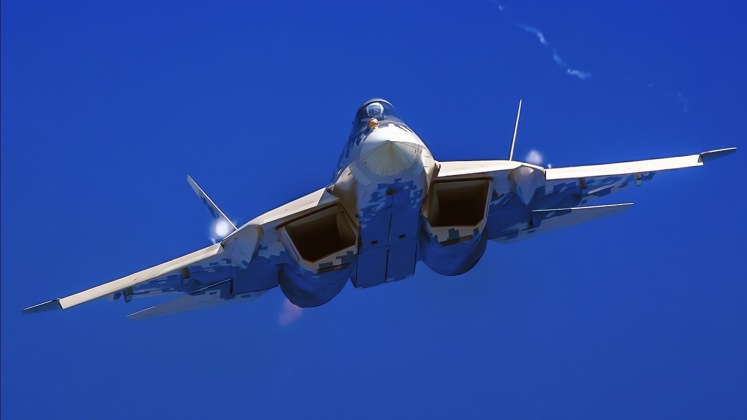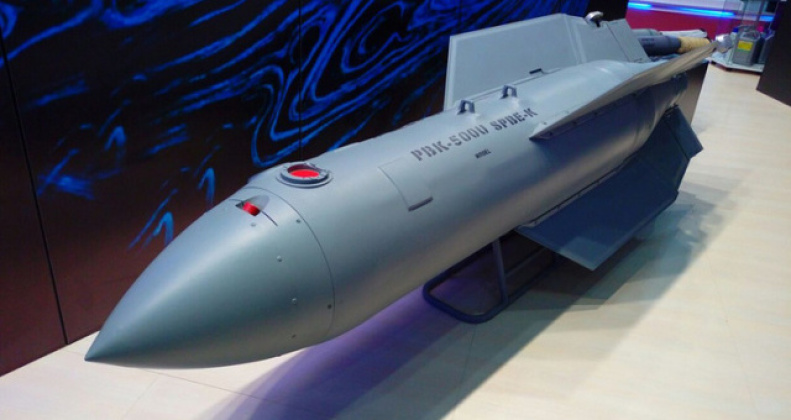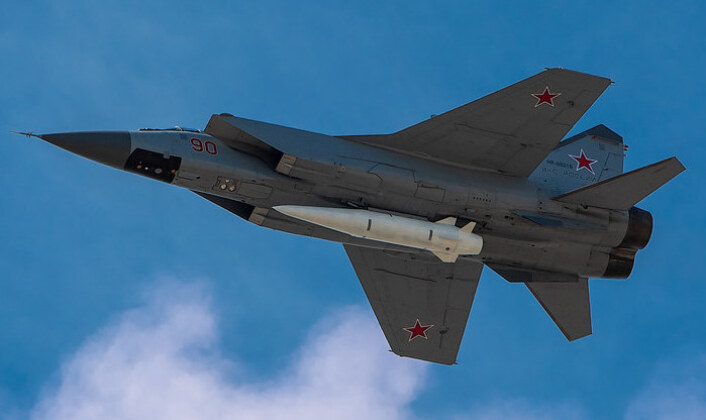Russia’s Su-57 next generation fighter saw its its first combat deployment in February 2018, when the aircraft were briefly dispatched to Syria to test their capabilities under combat conditions for the very first time. The aircraft deployed were notably prototypes rather than serial production fighters, and had only a very limited initial operating capability, although deployments of fighters in such development stages to low intensity combat zones is far from unprecedented. A notable other example is the American F-35, which also as a limited initial operating capability and but was still deployed for combat in Syria and Afghanistan where the threat of high altitude anti aircraft fire or electronic interference is almost totally non existent. The Su-57 is still thought to be restricted to an initial operating capability, unlike the Chinese J-20 or American F-22 which are fully operational. Unlike its two foreign heavyweight rivals, however, the Su-57 was designed to be far more versatile with a less total focus on air superiority and a greater ability to engage targets on land and at sea. In this respect it also differs from its predecessor from the fourth generation the Su-27 Flanker. Although the Su-57 is often hailed for its air superiority capabilities, an assessment of its air to ground and anti ship missiles in particular indicate that it is equally if not more capable in a strike role.

At the lower end the PBK-500U Drel glide bomb allows the Su-57 to engage ground targets 30-50km away, and benefits from precision guidance independent of the fighter’s own sensors to provide an effective ‘fire and forget’ capability. The bombs use inertial and GLONASS satellite guidance to maximise precision. A single cluster of sub munitions from the Drel bomb is reportedly sufficient to destroy an entire missile battery or a tank column, and the munition’s short range and lack of the need for thrusters or engines unlike standoff weapons allows the Su-57 to deploy considerably greater firepower when using it. The bombs notably have an identification friend or foe system and electronic warfare countermeasures, and are far more expensive than simpler guided weapons but also uniquely potent. Each bomb contains fifteen self-guided anti-tank element charges which weigh around fifteen kilograms each, and their guidance systems make them optimal for engaging fast moving targets. The bombs are expected to be integrated onto older aircraft such as the Su-34 strike fighter alongside the Su-57.

For longer range strikes, a munition which recently made its debut when deployed from the Su-57 in Syria was the TV-guided Kh-59MK2 cruise missile, which was first used against Islamist insurgent targets in Syria in May 2018. The missile’s ability to deploy a 320kg penetrating warhead and strike targets at up to 115km away makes it useful against fortified installations such as bunkers. Whether the Su-57 will also deploy the Kh-59MK variant, specialised in targeting ships, remains to be seen, but this remains highly likely particularly if plans for a carrier based variant of the fighter ever materialise or if it is deployed in a maritime strike role as the Su-30 is today. A new variant of the missile was unveiled in July 2021, the Kh-59MKM, with a larger nose section diameter and improved penetrative capacity with the ability to penetrate up to 3 metres of reinforced concrete. The missile carries a 40 kg array of four shaped pre-charges with a contact delayed action fuse under the radome, but the majority of damage is done by an organic 320 kg penetrating tandem warhead.

The Su-57 can deploy the Kh-58 anti radiation missiles which is optimised to neutralise enemy radar and air defence sites by homing in on enemy radar emissions to pave the way for strikes by older non-stealth aircraft. A number of variants of the missile have been developed, including the Kh-58UShE anti radiation missile, which with a range of over 150km is a potentially ideal weapon for a ‘sniper’ role. The older Kh-38M, deploys a large 250kg warhead with various variants using satellite, infrared, laser and radar guidance systems to strike with high levels of precision. Striking at over twice the speed the sound, they are significantly faster than most cruise missiles making them more challenging to intercept. A tactical cruise missile variant of the Kh-38, known as the Kh-36 Grom, is also set to be deployed by the Su-57 and has a 120km range.

The Su-57’s most notable air to ground missile is a miniaturised variant of the Kh-47M2 Kinzhal hypersonic ballistic missile, as while air launched ballistic missiles are relatively rare no others have yet been deployed from a fighter sized aircraft which makes it potentially revolutionary. Combined with the Su-57’s powerful sensors, high endurance and stealth capabilities, the Kinzhal will pose a serious threat to high value targets and are capable of evading all known air defences due to their speed and manoeuvrability. The Kinzhal’s speed alone is considered sufficient to tear even the largest warships in half with a single impact, which combined with its range of over 1000km will make the Su-57 a very capable ship hunter.
